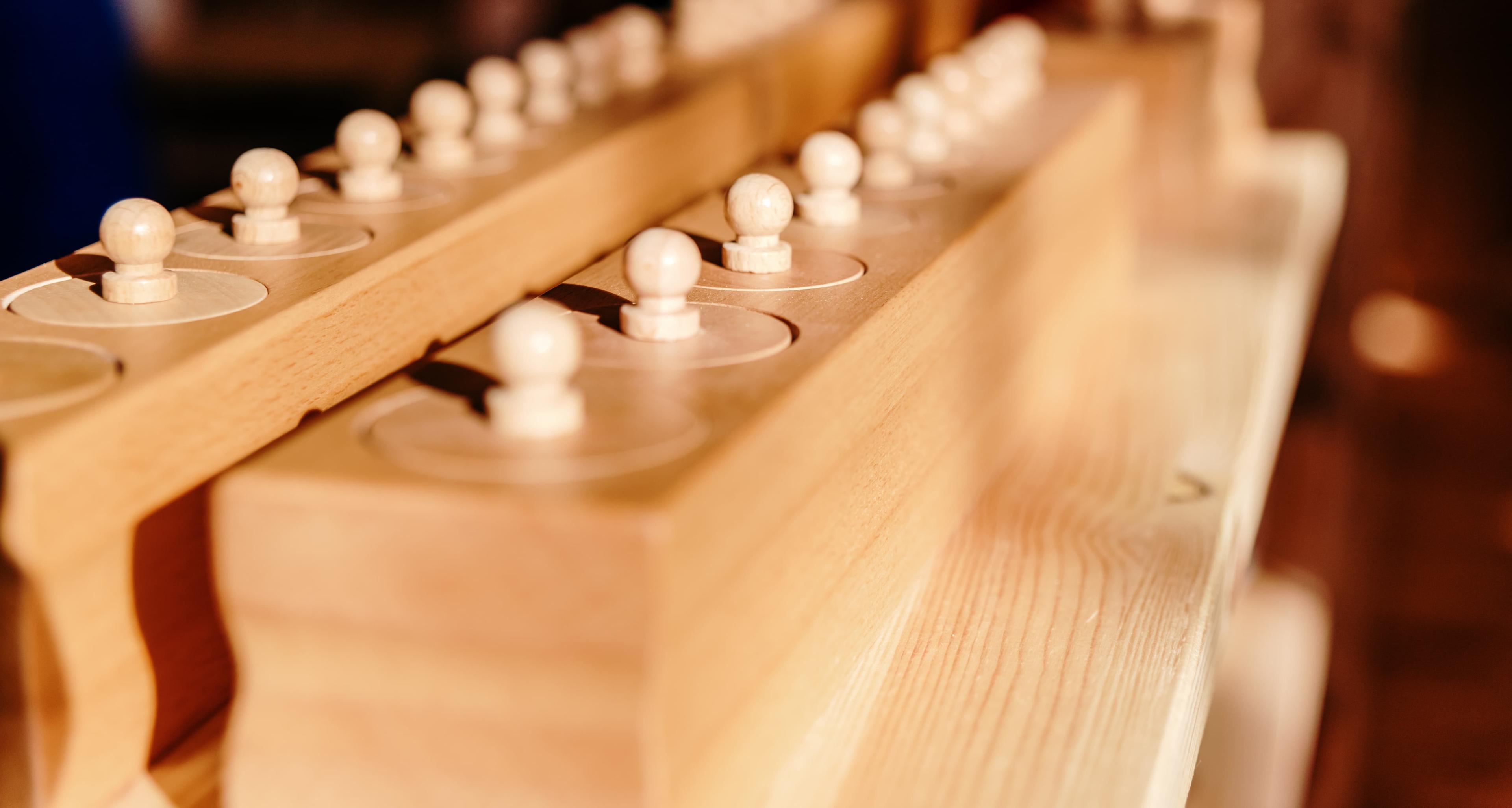The Knobbed Cylinder exercise is a Montessori sensorial material that helps children develop their visual discrimination, fine motor skills, and hand-eye coordination.
The purpose of this exercise is not to complete it quickly but to develop a wide range of sensory and perceptive skills. It is important to let the child experiment and enjoy the process without any pressure. The language aspect of the exercise is taught near the end, once the child has gained enough experience and the words have meaning.
Benefits:
- Improves visual discrimination skills
- Enhances hand-eye coordination
- Develops language skills
- Increases self-confidence and independence.
There are four sets of blocks, each with ten cylinders of different dimensions and each set is designed to focus on a specific aspect of size.
Each of the four sets has its own unique features:
- Block A: All the cylinders have the same diameter and differ only in height, with the shortest cylinder at one end and the tallest at the other.
- Block B: All the cylinders have the same height but differ in diameter, with the thinnest cylinder on the left and the thickest on the right.
- Block C: The diameter of the cylinders increases while their height decreases, with the shortest cylinder having the largest diameter and the tallest cylinder having the smallest diameter.
- Block D: The diameter and height of the cylinders increase together, so the tallest cylinder is also the thickest, and the shortest cylinder is the thinnest.

What you'll need:
- Block B
- A small table or mat for your child to work on
Instructions:
- Invite your child to join you in this exercise.
- Carry the block to the table, using both hands.
- Place the block on the table so the largest cylinder is on your left, closest to your child.
- Remove the cylinders from the block using a three-fingered grasp, taking them out from left to right.
- Place the cylinders down carefully, one at a time, in random order between you and the block.
- Locate the thinnest cylinder and return it to its place first.
- Choose any cylinder at random and examine it carefully.
- Select the hole with the appropriate size and shape.
- Grasp the cylinder by the knob using the three-fingered grasp and return it to its place.
- Repeat the process, carefully examining the cylinders and deliberately returning them to their correct place.
Expansion Exercises:
To increase the challenge, your child can work with two, three or all four blocks:
- Expansion Exercise A: Your child can work with any two blocks, placing them parallel to each other and perpendicular to the child, with enough space to place cylinders between them.
- Expansion Exercise B: Your child can work with any three blocks, placing them in a triangle formation.
- Expansion Exercise C: Your child can work with all four blocks, placing them in a square formation.
Points to note:
- Handle the cylinders with care.
- Don't rush the child and let them experiment.
- Introduce language at the right time.

